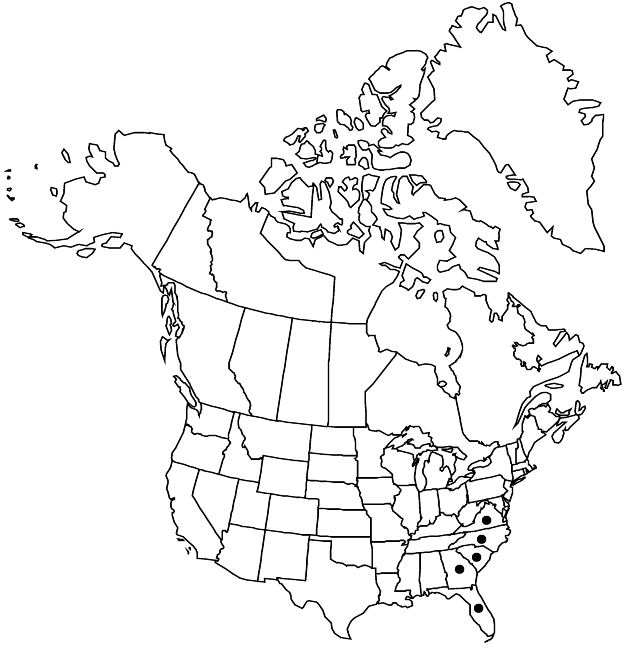Euphorbia exserta
Pl. Life Hartsville, 88. 1912.
Herbs, perennial, with spreading rootstock. Stems erect or ascending, unbranched or branched, solitary, few, or occasionally densely clumped, previous years dead stems not persistent, 20–33 cm, usually glabrous, rarely sparsely villous, glaucescent. Leaves alternate; stipules less than 0.1 mm; petiole (0–) 1–3 mm, glabrous; blade linear or linear-elliptic to obovate or orbiculate, proximal greatly reduced, scalelike, 15–30 × 1–20 mm, base cuneate to rounded, margins entire, apex rounded, broadly acute, or emarginate, surfaces glabrous, glaucescent; venation often obscure on narrow leaves, midvein conspicuous. Cyathia usually in terminal dichasia, sometimes pleiochasia; peduncle 6–33 mm, filiform, glabrous. Involucre usually dark red, campanulate, 1.3–1.6 × 1.4–2.1 mm, glabrous; glands 5, usually dark red, rarely greenish red, elliptic reniform, thickened, 0.3–0.5 × 0.8 mm; appendages white or green, often forming narrow rim around distal margin of gland, 0–0.2 mm, entire. Staminate flowers 20–25. Pistillate flowers: ovary glabrous; styles 0.4–0.8 mm, 2-fid at apex. Capsules depressed-globose, 1.8–2.5 × 3.6–4.4 mm, glabrous; columella 1.9–2.4 mm. Seeds ashy white, ovoid, 2.1 × 1.3 mm, angled with 5 blunt longitudinal ridges, with shallow and irregular pits; caruncle absent.
Phenology: Flowering and fruiting spring–summer.
Habitat: Xeric to dry pine-oak scrub of sand hills, pine-oak woodlands, pine-oak savannas.
Elevation: 0–150 m.
Distribution

Fla., Ga., N.C., S.C., Va.
Discussion
K. R. Park (1998) recognized both Euphorbia exserta and E. gracilior as distinct species, with the former known only from the holotype. However, this treatment follows M. J. Huft (1997) and treats E. gracilior as a synonym of E. exserta. Although the type of E. exserta is unusual in having greenish red (versus dark red) cyathia and glands, as well as small gland appendages, it is otherwise typical of the species as a whole, including features such as the upright habit, reddish coloration, scalelike proximal leaves, and filiform peduncles to 30 mm that are also common to plants formerly treated as E. gracilior. Euphorbia gracilis Elliott, which has sometimes been applied to E. exserta, is an illegitimate name (a later homonym of E. gracilis Loiseleur-Deslongchamps) and pertains here.
The upright habit and usually dark red cyathia and glands distinguish Euphorbia exserta from the otherwise similar E. ipecacuanhae, while the glaucescent vegetative parts and smaller gland appendages readily separate E. exserta from the similar E. curtisii. Euphorbia exserta is found on the Gulf and Atlantic coastal plains.
Selected References
None.
Lower Taxa
"connate" is not a number. "distinct" is not a number."connate" is not a number. "distinct" is not a number.